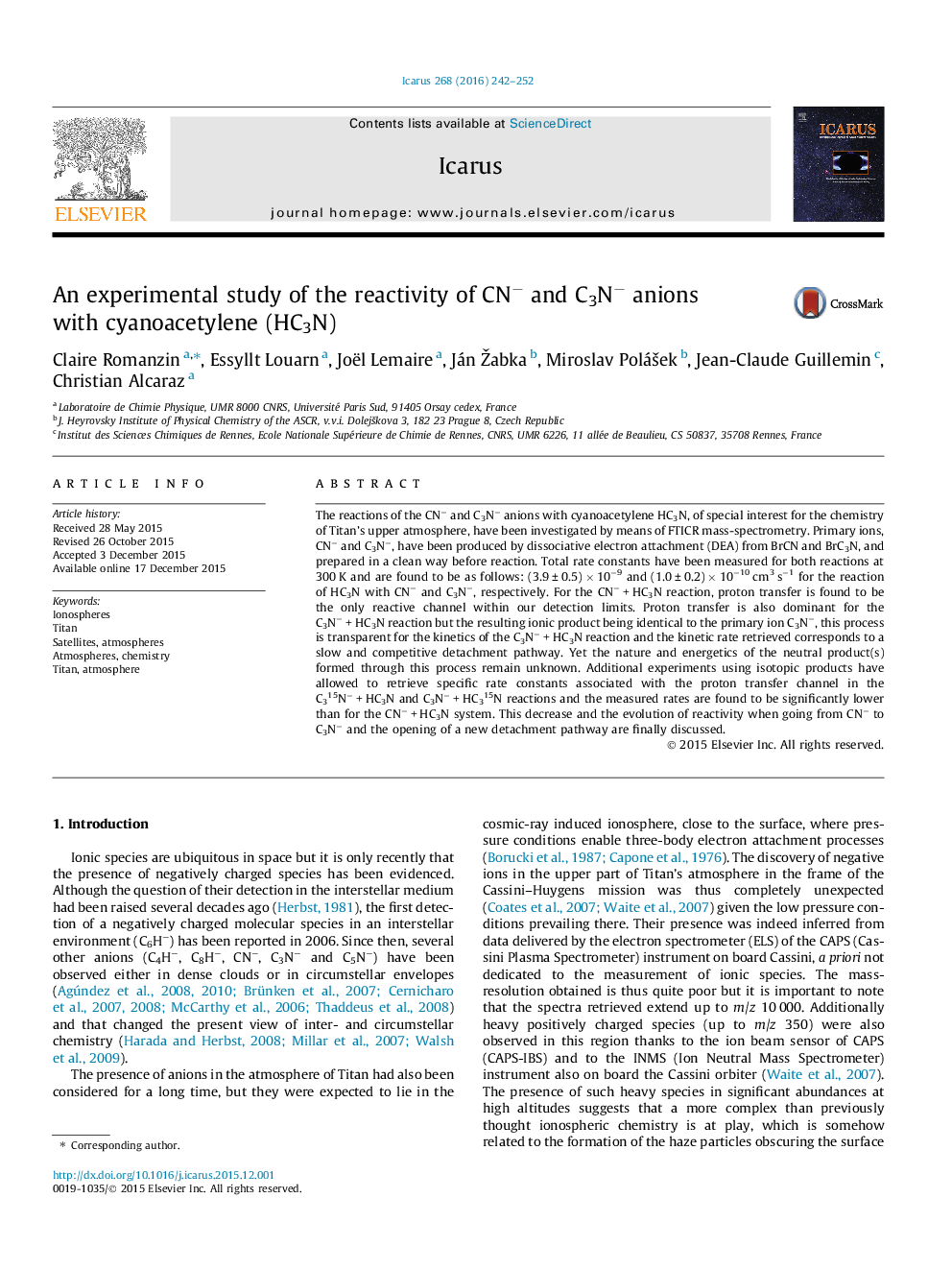| Article ID | Journal | Published Year | Pages | File Type |
|---|---|---|---|---|
| 8135597 | Icarus | 2016 | 11 Pages |
Abstract
The reactions of the CNâ and C3Nâ anions with cyanoacetylene HC3N, of special interest for the chemistry of Titan's upper atmosphere, have been investigated by means of FTICR mass-spectrometry. Primary ions, CNâ and C3Nâ, have been produced by dissociative electron attachment (DEA) from BrCN and BrC3N, and prepared in a clean way before reaction. Total rate constants have been measured for both reactions at 300 K and are found to be as follows: (3.9 ± 0.5) Ã 10â9 and (1.0 ± 0.2) Ã 10â10 cm3 sâ1 for the reaction of HC3N with CNâ and C3Nâ, respectively. For the CNâ + HC3N reaction, proton transfer is found to be the only reactive channel within our detection limits. Proton transfer is also dominant for the C3Nâ + HC3N reaction but the resulting ionic product being identical to the primary ion C3Nâ, this process is transparent for the kinetics of the C3Nâ + HC3N reaction and the kinetic rate retrieved corresponds to a slow and competitive detachment pathway. Yet the nature and energetics of the neutral product(s) formed through this process remain unknown. Additional experiments using isotopic products have allowed to retrieve specific rate constants associated with the proton transfer channel in the C315Nâ + HC3N and C3Nâ + HC315N reactions and the measured rates are found to be significantly lower than for the CNâ + HC3N system. This decrease and the evolution of reactivity when going from CNâ to C3Nâ and the opening of a new detachment pathway are finally discussed.
Related Topics
Physical Sciences and Engineering
Earth and Planetary Sciences
Space and Planetary Science
Authors
Claire Romanzin, Essyllt Louarn, Joël Lemaire, Ján Žabka, Miroslav PoláÅ¡ek, Jean-Claude Guillemin, Christian Alcaraz,
